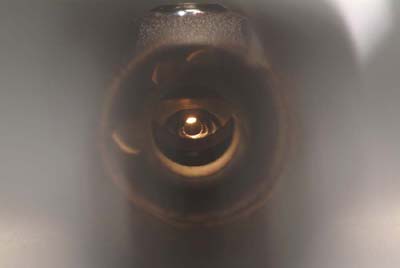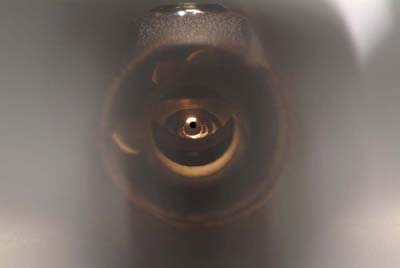Forum Replies Created
-
AuthorPosts
-
dkimmelSpectatorIn cases like this would it be of any benefit to have the patient back and do a biostimulation tx ?
David
dkimmelSpectatorI keep reading that Caries detector gives false postives when used with the laser. In several of the laser course at DT in Vegas this was brought up. But there was always a lower level rumble that you could tell false postives. Anyone whats up??
David
dkimmelSpectatorWhat is EMLA ?
DAvid
Glenn van AsSpectatorBob Gregg is the expert on LLLT ( Low level laser therapy) and biostimulation.
I am not a big guru in this area. I doubt it would improve the pulpitis much but I could be wrong.
Glenn
Glenn van AsSpectatorIt is a topical anesthetic cream you can apply to the soft tissue with both a short and long acting anesthetic.
Glenn
Glenn van AsSpectatorCaries detector gets all over the enamel………….I hate it.
You need to use high magnification to see the caries or tactile sense with a slowspeed bur.
THis is one concern I have with laser dentistry is that I am positive that a fair amount of decay is being left behind.
SOft mushy decay is tough to remove with the laser and in addition you will find that as the dentin rehydrates from the constant stream of water the caries become the same shade as dentin.
The textures that are different are only visable at higher mags.
Here is a case I did where you can see the false positives ( YOU HAVE TO GO HALF WAY DOWN THE PAGE TO SEE THE FALSE POSITIVES – 3RD CASE DOWN THE PAGE)
http://www.rwebstudio.com/cgi-bin/ikonboard/topic.cgi?forum=25&topic=27
Glenn
2thlaserSpectatorHi Glenn, good case. This is why I like to use the mini spoon excavators. What the laser leaves behind, I get out very easily with the spoons. Patients NEVER feel discomfort with it, and then I relase the surface at 1W or less to “sterilize” and fill. The tactile sensation that is missing using the laser is there with the use of the mini spoons. Just what I do. That’s it!
Mark
2thlaserSpectatorOk Glenn, here I go. I first reported doing this, to of all people, my wife. I anesthetized through her temporary, using the settings you specified in your post, 5.5W 80-90%air, 60-70% water for 90sec, to 2 min. Then reset the power to 1.25W 40%or so air, 20-30%water, and cut a groove in the temp, from the buccal up the occlusal and down the lingual, cutting the temp in half. Then I use a Woodson blade, and just separate the halves, and remove the temp. Very easy and painless. I like to cement crowns without anesthetic due to the proprioception that helps with adjusting occlusion when neccessary, but obviously in some cases, that’s not possible, so, the needle comes out. It really just depends on the situation, and as you all know, each and every patient and their situations are different. SO, that in mind, try it, and let us know YOUR experiences!
This is a great forum to share, we really learn that way!
Hope the above settings help.Glenn, your laser, because it’s at 30hz, delivers a tad less energy I would suspect because of the increased pulse rate, you might find you need a “tad” more power to remove the temps, it you use it at 30hz.
I usually go back and forth over the “groove” I made in the temp 2-3 times, making sure I have a large enough space to place my instrument in to separate the halves of the temporary. Also, I use a G-4 tip for this, it’s a 4mm 6 micron diameter tip.
Glenn, what is your size tip for the Conituum users to use here? It is good we are using different lasers, and can compare the two hz rates, and powers for those who have the different Erbiums, don’t you think? We must remember this in our posts, so we can help both types of users, Contiuum, and Biolase. I love it when we work together!
Mark
2thlaserSpectatorOne More Thing!
When I remove acrylic temps, I start out defocused, and when I just see the ablation of the acrylic start, I move ever so slowly towards the temp to “cut” through it, and most of the time, absolutely no laser energy affects, or “ablates” the underlying tooth structure, which is another reason why:
1. use magnification
2. it’s mostly pain/sensation free
3. learn to use the laser in the defocussed mode as well as the focused mode. Mostly, I use the tip in the focused mode only when I have to, cut tooth structure. NEVER HURRY THESE PROCEDURES, there is no reason to. It’s like cutting through composite, quick and easy. But really try to use the least amount of energy possible, it really makes this a comfortable and predictable procedure.
Mark
2thlaserSpectatorMy 2 cents worth is this. The Waterlase seems to be a bit more sensitive to movement, BUT, I have 3 operatories, and 1 laser, and move it between patients everyday, all day. Just move is slowly, and kindly. I have not seen the alignment change in mine in over a year so far, and I use it 90% of my day on everything. (Biolase ought to use my laser in a study don’t you think? I use it so much). I still, like any other piece of EXPENSIVE equipment, treat it with kindness, and gentleness. It is a precision piece of equipment, like a good camera, and should be respected and treated that way. Ok, my 2 cents, American (Glenn!).
Mark
PS….my wife being out of town, I am getting my posts up eh?
2thlaserSpectatorGlenn,
you are right, Bob probably knows for sure. When you point a laser pointer at a reflective surface, what happens? The same HAS to happen to our wavelengths I would think. Energy is directed BACK into the tip, thereby ruining it. If we (Biolase users) still use the tip to finish, once it is “spoiled”, we can blow our fibers. What about your DeLight? Does that happen to your laser? The reason Biolase lasers blow trunk fibers when that happens is in the mirror in the end of the handpiece. The mirror becomes “blackend” and the laser engery then “overloads” the trunk fiber, and then WHAMMO, good bye!
Here is what the mirror looks like as you look through the end of the handpiece…
Here’s what it looks like after it’s “blacked” by using a spoiled tip….(hope I got these right!)

Hope this helps the Waterlase users! We should add this post to the Maintenance page Ron, can you do that?
Mark
2thlaserSpectatorPS…looks like it was an accurate post of pictures. MAKE SURE YOU LOOK THROUGH THE END OF THE HANDPIECE WITH MAGNIFICATION. It is the ONLY way you can really see this.
Mark
Glenn van AsSpectatorSorry Mark: I forgot about your spoons……since I ordered a set and will start using them I will take some photos when they get here.
I apologize and realized as soon as I saw your name that I had forgotten that alternative.
At present I use the slowspeed as even with high mag , I go on record as saying it is difficult to tel whether all the decay is out visually.
Glenn
Glenn van AsSpectatorHi Mark: Continuum is making more and more tips for the laser as is Biolase.
At present they have……..
1. 600 micron tips (.6mm) that are 80 degrees, 30 degrees, and straight.
2. 400 micron tips (.4mm ) that are 80 degrees which cut faster at the same energy settings compared to the 600 because the power density is increased when the tip surface area is decreased. These tips are fragile.
3. They make sapphire tips and straight tips for the handpiece design which I dont use (PS I hear through the grapevine that Biolase is coming out with a pen grip). Many of you know by now that I dont use the handpiece design because I cant see around the back of the handpiece with the scope. That is why we use surgical length burs and the sides of burs (angle the handpiece) when using conventional handpieces for dentistry with the scope. The laser is end cutting so it is not as easy to use the side of a laser tip.
4. Endo tips that are 21 26 and 31 mm long and 200 and 300 microns in diameter.
5. A soft tissue tip which is a long think tip that comes to a point.
6. A chisel shaped tip for cutting flaps……….I like this one alot.
THats all that come to mind now but there are others being developed.
30Hz means that it is 30 pulses per second so if you increase the energy to its maximum on the machine it is around 6 watts.
You 6 watts would be 20 Hz and 300 mj per pulse. Not sure if it is better to have 20Hz and 300 mj or 30 Hz and 200 mj, but I know that hitting the tooth 10 extra times per second wont hurt the speed but may hurt the tooth a little more (less relaxation time) and I do think that Biolases shorter pulse duration is a good thing too.
Anyways, thats it for me…….off to hockey.
glenn
AnonymousParticipantOriginally posted by Mark C.
Glenn,
you are right, Bob probably knows for sure. When you point a laser pointer at a reflective surface, what happens? The same HAS to happen to our wavelengths I would think. Energy is directed BACK into the tip, thereby ruining it. If we (Biolase users) still use the tip to finish, once it is “spoiled”, we can blow our fibers. What about your DeLight? Does that happen to your laser? The reason Biolase lasers blow trunk fibers when that happens is in the mirror in the end of the handpiece. The mirror becomes “blackend” and the laser engery then “overloads” the trunk fiber, and then WHAMMO, good bye!
Here is what the mirror looks like as you look through the end of the handpiece…
Here’s what it looks like after it’s “blacked” by using a spoiled tip….(hope I got these right!)

Hope this helps the Waterlase users! We should add this post to the Maintenance page Ron, can you do that?
Mark
Done! -
AuthorPosts
